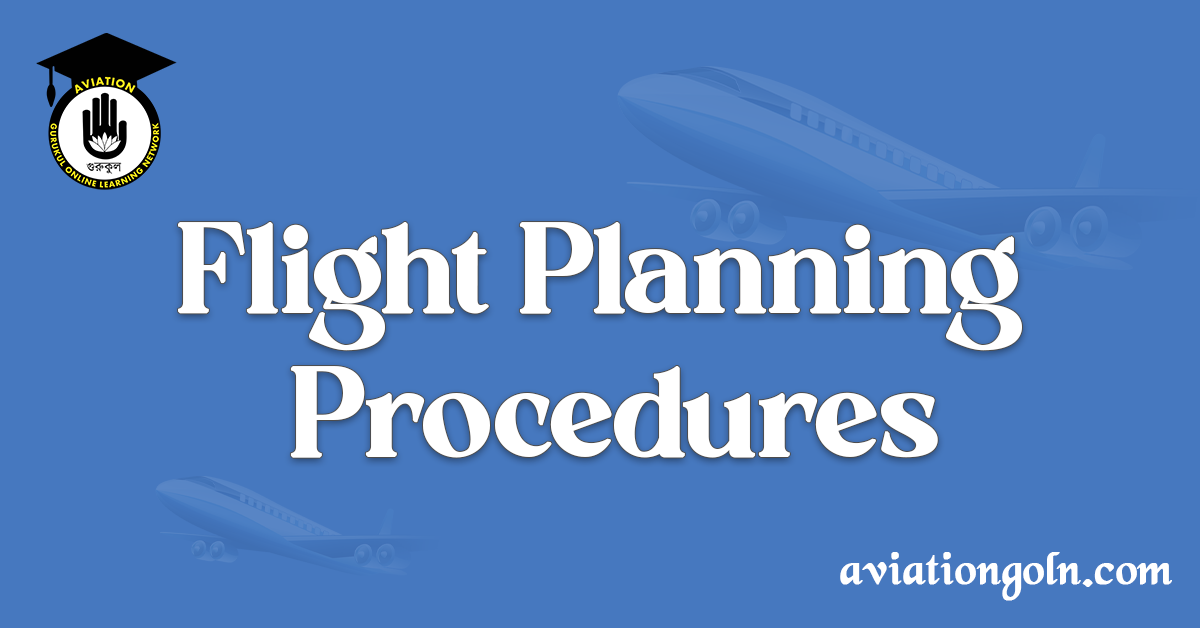Flight planning is a crucial step in aviation that entails developing a thorough and detailed plan for a particular flight. It involves the examination of multiple factors that are fundamental to safe, efficient, and legal operation. From weather conditions to fuel requirements, alternate airports to navigational aids, every detail is important. When it comes to Air Traffic Services (ATS), flight planning takes on an even more crucial role, ensuring safe and orderly flow of air traffic and reducing the possibility of airborne conflicts.
Flight Planning Procedures

The Importance of Flight Planning
In aviation, planning is everything. The necessity of flight planning can never be overemphasized, as it ensures the safety of the aircraft and everyone on board, and also the efficiency and legality of the flight. A flight plan serves as a navigational blueprint, detailing the aircraft’s proposed route from departure to arrival, including potential diversions if needed. Flight planning also helps pilots manage fuel consumption effectively, considering the best altitude and airspeed for flight.
In the context of Air Traffic Services, the importance of flight planning escalates even further. ATS professionals are responsible for the management and coordination of aircraft movement in the airspace and on the ground, which requires effective communication and an accurate understanding of each aircraft’s planned movements.

Key Components of a Flight Plan
A standard flight plan consists of multiple components, each carrying its own significance:
- Aircraft Identification: This is the registration or tail number of the aircraft. It provides a unique identity for each aircraft.
- Flight Rules: This section indicates whether the flight will be conducted under Visual Flight Rules (VFR) or Instrument Flight Rules (IFR).
- Type of Flight: This refers to the nature of the flight, such as commercial, private, or military.
- Number and Type of Aircraft: Information about the specific make and model of the aircraft.
- Cruising Speed: The proposed speed at which the aircraft will travel at the cruising altitude.
- Departure Aerodrome and Time: The departing airport and the estimated time of departure (ETD).
- Cruising Altitude: The altitude at which the aircraft plans to fly for the majority of the journey.
- Route: The planned route that the aircraft will take from the departing airport to the arrival airport, including waypoints.
- Destination Aerodrome and Estimated Time of Arrival: The intended arrival airport and the ETA.
- Alternate Aerodromes: The other airports where the aircraft can land if it cannot land at the planned destination due to unforeseen circumstances.
- Fuel Endurance: The total fuel load onboard the aircraft, and how long the aircraft can fly with this fuel.
- Other Information: Any additional information necessary for Air Traffic Services, such as emergency and survival equipment onboard, special handling requirements, etc.

Flight Planning Procedures in Air Traffic Services
ATS utilizes flight plans to facilitate the safe and efficient operation of flights. Here are the general steps in the flight planning procedures as followed by ATS:
- Flight Plan Submission: The pilot or the aircraft operator submits the flight plan to the ATS unit at least 60 minutes before departure, or a shorter period as specified by the ATS authority. This time is necessary for the flight data to be processed and disseminated to all relevant ATS units along the route.
- Preflight Preparation: ATS personnel analyze the flight plan, verify the details, and prepare the flight progress strips. These strips contain the details of the flight, which are used by air traffic controllers to track the progress of the flight.
- Coordination and Clearance: The ATS unit coordinates with other relevant units, such as the departing aerodrome control tower, en-route control centers, and the destination aerodrome control tower. They issue the necessary air traffic control clearances based on the flight plan and current traffic situation.
- In-Flight Updates and Modifications: During the flight, the pilot communicates with ATS through radio. If there are any changes to the flight plan due to weather, traffic, or other operational reasons, the pilot informs ATS, who then updates the flight plan accordingly and coordinates the changes with other relevant ATS units.
- Arrival and Post-Flight Procedures: Upon arrival, the aircraft reports to the ATS unit at the destination aerodrome. The ATS unit updates the status of the flight as ‘arrived’ and closes the flight plan.

The Role of Technology in Flight Planning and ATS
Technology plays a crucial role in modern flight planning and ATS procedures. From computerized flight planning software to automated air traffic management systems, technology has significantly enhanced the efficiency and accuracy of these processes.
For instance, Flight Data Processing Systems (FDPS) are used to process and manage flight plan data, while Air Traffic Management (ATM) systems help to manage and control air traffic based on the processed flight data. These systems provide real-time updates and alerts, aiding controllers in making quick and accurate decisions.
Flight planning software can perform complex calculations for fuel consumption, flight time, and cost, considering factors such as aircraft performance, weather conditions, airways, and navigational aids. These advanced software solutions help to optimize the flight plan for maximum efficiency and safety.

Flight planning is at the heart of any successful flight operation, and in the context of Air Traffic Services, it becomes even more vital. From ensuring safety to optimizing efficiency, a well-prepared flight plan serves as a vital roadmap for pilots and air traffic controllers alike. With the help of advanced technology, these processes are becoming more accurate and efficient, contributing to the overall safety and progress of aviation.
